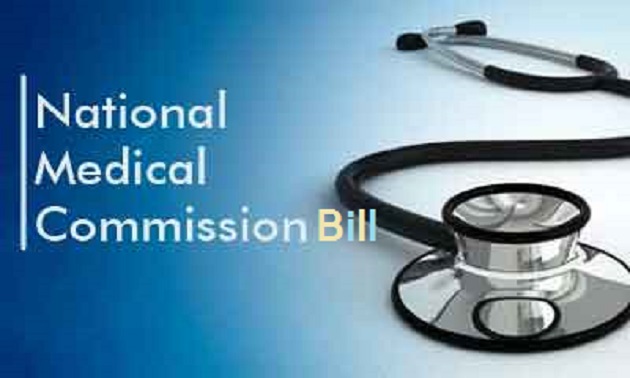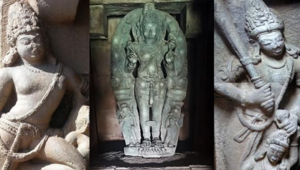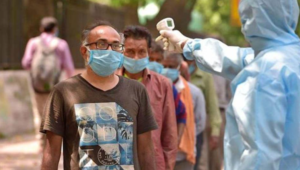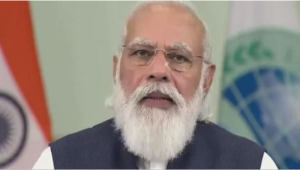
The National Medical Commission Bill, 2017 was introduced in Lok Sabha recently.
When the Bill came to light, it generated an unprecedented response – a one-day strike by nearly three lakh doctors and protests from all sections – doctors, health activists, former policy makers, academicians and so on, making the government to refer it to the Standing Committee for further deliberation.
Background:
The idea of reforming and revamping the MCI took root in the Independence Day speech of former prime minister in 2009. The vision was to replace the MCI with an overarching National Commission for Human Resources for Health with four verticals looking after the four different aspects of regulation – undergraduate, postgraduate education, accreditation and licensing and ethical practice.
It was to provide platforms for cross consultation and coordination between the disciplines and medical and non-medical personnel.
In 2013, the Parliamentary Standing Committee (PSC) returned the ambitious Bill with three terse observations:
- The states’ autonomy and potential violation of federal principles;
- excessive bureaucratisation and centralisation; and
- Faulty selection procedure of regulators, providing scope for abuse.
Reason for introducing National Medical Commission Bill, 2017
First proposed in 2016, the Bill aims to overhaul the corrupt and inefficient Medical Council of India, which regulates medical education and practice.
The Bill seeks to repeal the Indian Medical Council Act, 1956 and dissolves the current Medical Council of India (MCI). The MCI was established under the 1956 Act, to establish uniform standards of higher education qualifications in medicine and regulating its practice.
The Bill provides for a medical education system which ensures:
- availability of adequate and high quality medical professionals,
- adoption of the latest medical research by medical professionals,
- Periodic assessment of medical institutions, and
- An effective grievance redressal mechanism.
What are the key issues regarding the regulation of medical education and practice?
- Separation of regulatory powers
Over the years, the MCI has been criticised for its slow and unwieldy functioning owing to the concentration and centralisation of all regulatory functions in one single body.
This is because the Council regulates medical education as well as medical practice. In this context, there have been recommendations that all professional councils like the MCI, should be divested of their academic functions, which should be subsumed under an apex body for higher education to be called the National Commission for Higher Education and Research.
- Conflict of interest
With most members of the MCI being elected, there has been a conflict of interest where the regulated elect the regulators, preventing the entry of skilled professionals for the job.
The Niti Aayog Committee recommended that a framework must be set up under which regulators are appointed through an independent selection process instead.
- Fee Regulation
The NITI Aayog Committee (2016) recommended that a medical regulatory authority, such as the MCI, should not engage in fee regulation of private colleges. Such regulation of fee by regulatory authorities may encourage an underground economy for medical education seats with capitation fees (any payment in excess of the regular fee), in regulated private colleges.
- Professional conduct
The Standing Committee on Health (2016) observed that the present focus of the MCI is only on licensing of medical colleges. The Committee recommended that the areas of medical education and medical practice should be separated in terms of enforcement of the appropriate ethics for each of these stages.
The National Medical Commission, 2017 Bill seek do to ….
The 2017 Bill sets up the National Medical Commission (NMC) as an umbrella regulatory body with certain other bodies under it.
- The NMC will subsume the MCI and will regulate the medical education and practice in India.
- Under the Bill, states will establish their respective State Medical Councils within three years. These Councils will have a role similar to the NMC, at the state level.
Functions of the NMC include:
- laying down policies for regulating medical institutions and medical professionals,
- assessing the requirements of human resources and infrastructure in healthcare,
- ensuring compliance by the State Medical Councils with the regulations made under the Bill, and
- Framing guidelines for determination of fee for up to 40% of the seats in the private medical institutions and deemed universities which are governed by the Bill.
What does the Bill say regarding the conduct of medical entrance examinations?
There will be a uniform National Eligibility-cum-Entrance Test (NEET) for admission to under-graduate medical education in all medical institutions governed by the Bill. The NMC will specify the manner of conducting common counselling for admission in all such medical institutions.
Further, there will be a National Licentiate Examination for the students graduating from medical institutions to obtain the license for practice. This Examination will also serve as the basis for admission into post-graduate courses at medical institutions.
What are the complex issues that have caused this widespread concern?
But despite its plus points, the NMC isn’t the game-changing legislation it could have been.
- Over centralisation
The over centralisation of the NMC and the near control over it by the central government, ranging from appointing all the 77 members for the various bodies is a concern. Such wide-ranging powers that will be exercised by the central ministry rob not just the federal nature of the law and reduce the NMC to an advisory role.
- Conducting uniform NEET is a laudable idea as it will enable standardising the competence levels of the “Indian Doctor”. Currently, the variance between the training and competencies in different colleges and regions is astoundingly wide. So such a reform was sorely required. Yet, there is apprehension that in the absence of standardisation of the quality of instruction in the country, it may widen disparities and become inequitable.
- The issue of fees
Assuming that an investment of Rs 400 crores is required to set up a medical college and with a view to attract investment, the Bill permits 60% of seats to be open for managements with unfettered freedom to charge any quantum of fees in order to recoup the investment. This logic is highly debatable. It is apprehended that this will increase rent seeking, corruption and reserve medical education only for the rich and well off.
- Issue of corruption
One of its goals is to rein in corruption in the MCI through greater distribution of powers. This is sought to be accomplished through an independent Medical Advisory Council to oversee the National Medical Commission, the proposed successor of the MCI. But all members of the NMC are a member of the Council, undermining the latter’s independence.
- Perhaps the most controversial provision of all is for a bridge course allowing alternative-medicine practitioners to prescribe modern drugs. One motivation could be to plug the shortfall of rural doctors by creating a new cadre of practitioners.
Keeping in view the current realities prevailing in the country, the Act has introduced a system under which the Commission and the heads of the councils of Ayush can design bridge courses legalising Ayush practitioners to prescribe allopathy medicines. Such cross pathy then endangers the credibility of all the systems of medicine.












